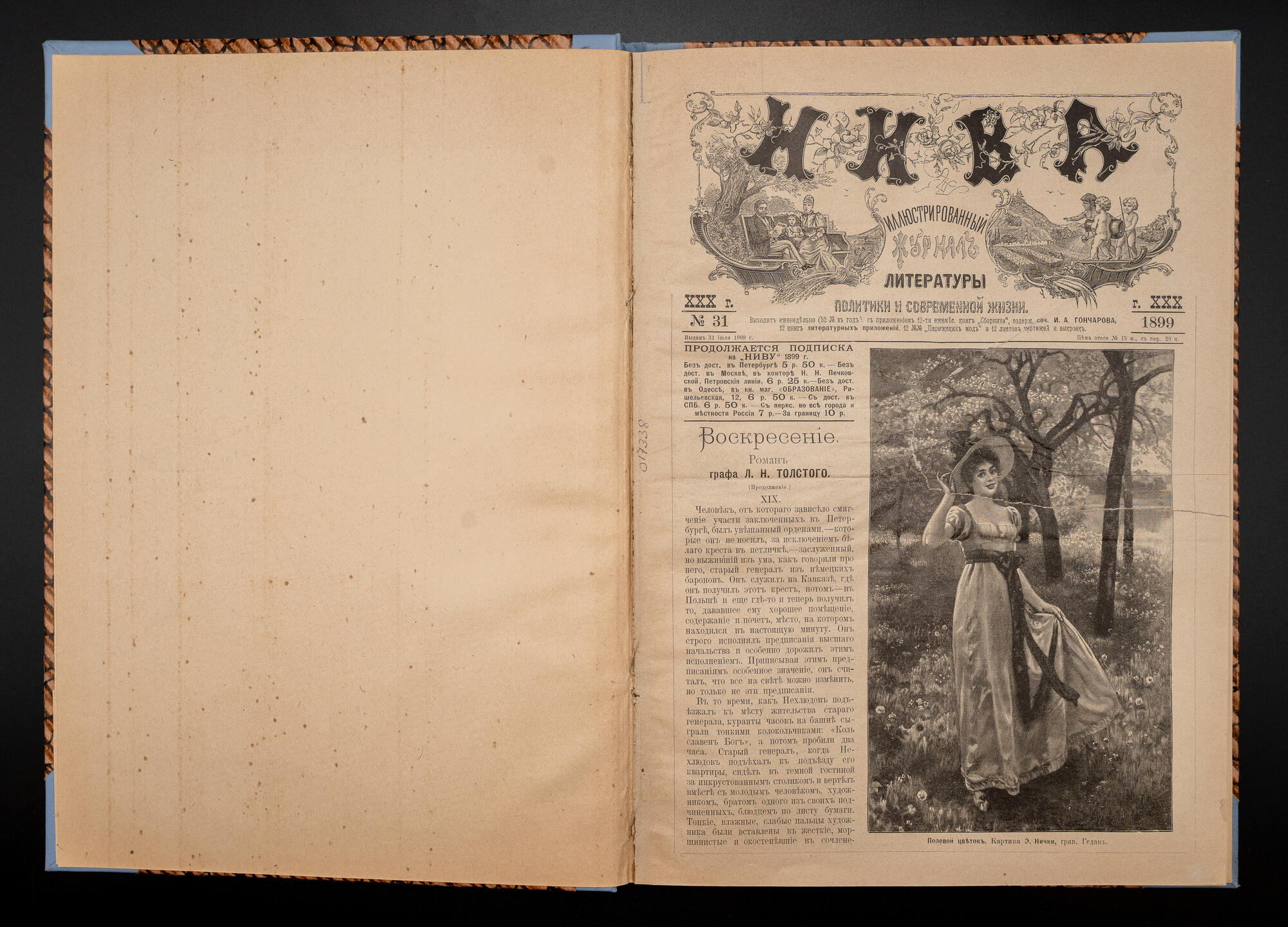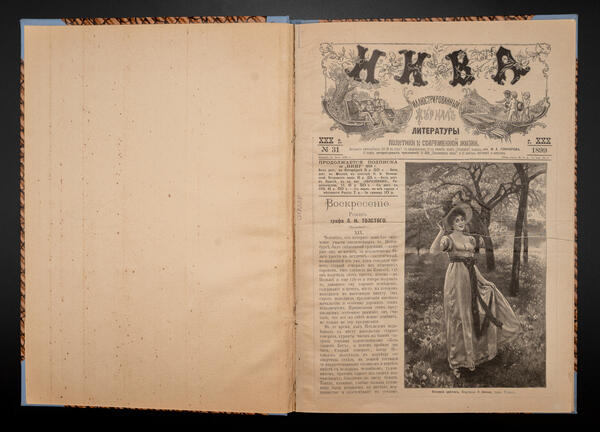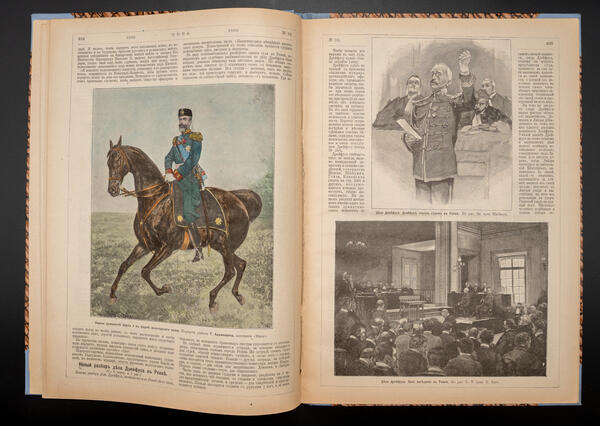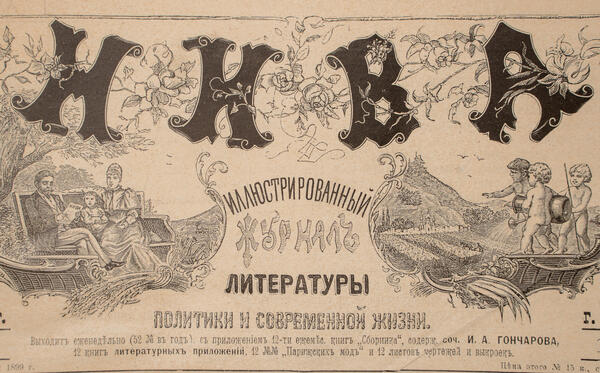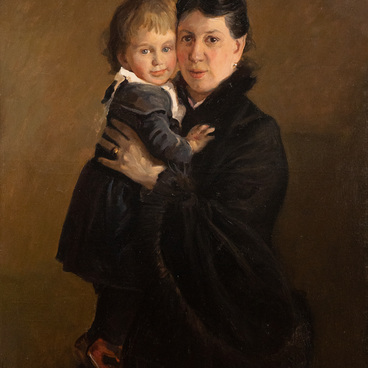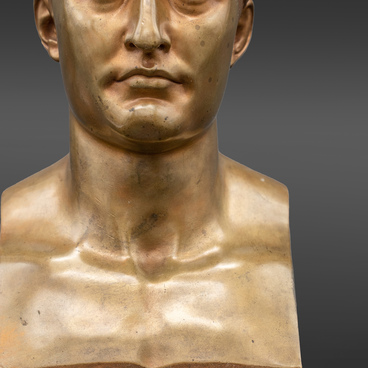The “Niva” magazine was a weekly literary magazine that was published in the Russian Empire for almost 50 years until the Revolution. It was aimed at a wide range of readers and published literary essays, popular science articles, and reproductions of paintings and engravings. Chekhov, Gorky, Yesenin, Chukovsky, Mamin-Sibiryak, Mandelstam, Leskov and dozens of other authors were published in the “Niva”. Leo Tolstoy’s novel “Resurrection” was first published in the “Niva” magazine.
In 1887, lawyer Anatoly Koni introduced Leo Tolstoy to the extraordinary story of Rosalia Oni, a street girl who was deceived, fell ill and died of tuberculosis. Her fate deeply shocked Tolstoy and served as inspiration for the plot of the “Konevskiy Story”, that later expanded into the novel “Resurrection”, on which the writer worked for about ten years (from 1889 to 1899).
Leo Tolstoy sought not only to convey the story of the poor woman and the repentant nobleman, but also build the composition of the novel as an all-encompassing picture of Russian life after the abolishment of serfdom and before the Revolution. He used this method of work in “War and Peace” and described it in a nutshell as “capture everything”. In “Resurrection”, more widely than in any other of his works, Tolstoy used the principle of artistic juxtaposition to expose “the contrast between the luxury of the rich and the poverty of the poor.”
“Resurrection” is a social panorama of Russian life at the end of the 19th century. In his sixth decade of writing, Tolstoy emphasized in his letters: “I am very busy with the contemporary.” After the publication of “Resurrection” in the “Niva” magazine, it was printed by many Russian publishing houses, and then the novel was published in France, Germany, Great Britain, the USA and other countries. Printed without censorship in huge circulation, “Resurrection” was completely bought up abroad by Russian readers.
In the article “Illegal and Confiscated Tolstoy”, Vladimir Bonch-Bruyevich wrote that in pre-Revolutionary Russia “some illegal editions of the writings of Leo Tolstoy reached a huge distribution.” In early January 1900, the “Rossiya” newspaper reported that “the novel of Leo Tolstoy was read by not tens of thousands but hundreds of thousands of people at once. He reached the masses of readers from the lower classes, to whom the news of outstanding literary phenomena is delivered second-hand.”